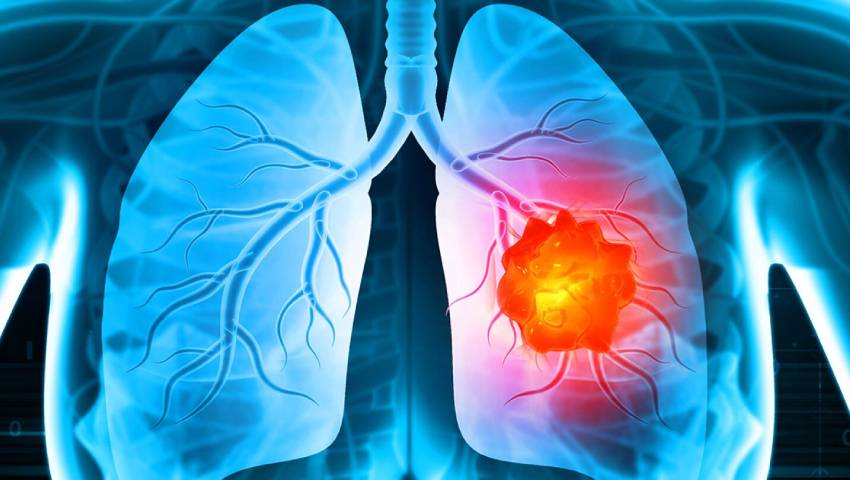
- 23/11/2023
- Dr. Pratik Patil
- 0 Comments
- Blog
Why Is Lung Cancer Increasing in Never-Smokers?
In recent years, there has been a concerning rise in the number of lung cancer cases affecting non-smokers. This demographic shift in lung cancer patients has spurred critical inquiries and prompted extensive research efforts, particularly in collaboration with Dr. Pratik Patil, renowned as the best oncologist in Pune. This blog post is committed to delving into the primary factors driving the increase in lung cancer cases among non-smokers. We will explore key elements such as environmental influences, genetic predisposition, exposure to secondhand smoke, and lifestyle choices.
Let’s See
Symptoms of Lung Cancer:
Lung cancer symptoms in non-smokers closely resemble those in individuals with a smoking history.
These signs may include:
- Persistent Cough: An enduring, worsening cough is a typical early indication of lung cancer.
- Breathing Difficulty: Struggling to breathe, especially during physical activities, can be a sign of underlying lung issues.
- Chest Discomfort: Unexplained chest pain can be a symptom, though it often presents in later stages.
- Coughing up Blood: Hemoptysis, or coughing up blood, is a significant warning sign that necessitates immediate evaluation.
- Voice Changes: A persistently altered voice or unexplained hoarseness may indicate lung cancer.
- Unexplained Fatigue: As cancer progresses, unexplained fatigue and weakness can become more pronounced.
Types of Lung Cancer:
Lung cancer is a complex condition that can affect people who’ve never smoked. It can generally be categorized into two main types: non-small cell lung cancer (NSCLC) and small cell lung cancer (SCLC) .
These categories encompass specific subtypes:
- Non-Small Cell Lung Cancer (NSCLC):
- Adenocarcinoma: This variety is the most common among individuals who’ve never smoked. It’s usually located in the outer parts of the lungs and tends to advance more slowly compared to other types.
- Squamous Cell Carcinoma: Typically found in the central airways of the lungs, this type is often associated with smoking but can also occur in non-smokers.
- Large Cell Carcinoma: Less common than the others, it can develop in any part of the lung.
- Small Cell Lung Cancer (SCLC):This type is often associated with smoking but can be diagnosed in non-smokers. It is generally more aggressive and frequently identified at advanced stages.
How Can You Lower Your Chances of Developing Lung Cancer:
Lowering the risk of lung cancer is of utmost importance, especially for individuals with heightened risks due to factors such as smoking or exposure to environmental carcinogens. In this article, we’ll uncover essential strategies and lifestyle adjustments to reduce your chances of developing lung cancer, leading to a healthier and safer future.
How Can I Help Lower My Risk of Getting Lung Cancer?
If you want to lower your risk of getting lung cancer, there are proactive steps you can take. In this article, we’ll delve into practical strategies and lifestyle adjustments to help you safeguard against this significant health concern while promoting overall lung health.
Never Smokers vs. Non-Smokers Definition:
- Never Smokers: These are individuals who have never taken up smoking or tried any tobacco or nicotine products. They’ve consistently stayed away from smoking throughout their lives.
- Non-Smokers: This is a broader category that includes folks who currently don’t smoke tobacco products. It can also extend to former smokers who’ve successfully kicked the habit. Recognizing these differences is vital, especially when examining the health impacts of tobacco use, exposure to secondhand smoke, and the risk of lung cancer in various groups of individuals. This understanding is essential for effective research and health initiatives.
Conclusion:
In summary, the growing prevalence of lung cancer among non-smokers is a complex and worrisome phenomenon. It is driven by various factors, such as environmental influences, genetic predisposition, secondhand smoke exposure, and lifestyle choices. Recognizing these factors is vital for early detection, prevention, and enhanced patient care. As this issue garners increased attention, further research and public awareness campaigns are crucial for addressing the evolving landscape of lung cancer and striving for improved outcomes for all individuals, regardless of their smoking history.
